Cody & The Noble Five
Hidden among the precipitous peaks of the Silvery Slocan in the rugged East Kootenays of British Columbia, way up Carpenter Creek, there’s a most amazing ghost town. Shoehorned into a narrow, confined valley, and sometimes obscured by dense undergrowth, it’s photogenic place with the name of Cody. Down a winding backroad, steep and rough in places and best tackled in something with a bit of clearance, one can find a couple derelict buildings and of particular interest, it’s the remains of the Noble Five Mill and Power Plant. A highlight is a massive Fairbanks Morse Engine abandoned in place once used make electricity to run the operation.
Cody was founded in the 1890s and much like storied Sandon a bit down the valley (and a must-visit), it was built on mining. In the mountains looming overhead, often shading the town from the sun, men were kept busy toiling away underground, stealing away nature’s riches and extracting huge quantities of Silver, Lead and Zinc (and sometimes other metal minerals). But it was not to last. Most of the deposits ran out and people moved away to greener pastures. By the 1910s Cody was done for, even if mining to one degree or another continued on sporadically for some time afterward.
There’s two buildings left standing today in what was once “downtown” Cody. The smaller of the two is said to be the former Noble Five Offices. It would be here where the day to day business of running the mine took place. The Noble Five operated on and off for some ninety years, sometime going full blast for a couple, then shutting down for periods or running at some reduced capacity. This was all depending on a number of factors, metal prices being one of importance. The interior is empty save for an old table in one corner. And outside, there’s a number of bed frames. We always seem to find those. It’s suggested this building pre-dates 1900 and may have served other purposes before the Noble Five acquired it (in the 1920s?). A private assay office, where ore is tested for value, is one that’s been tossed around, but nothing’s been confirmed. We’d venture to guess it sat empty for long periods while functioning in that capacity, and even before or afterwards. It may have been used as a cabin at some point later on.
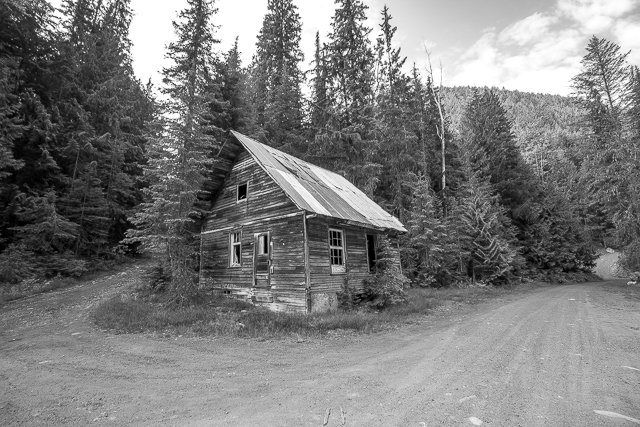
In Cody BC what’s said to be the ex-K&S Train Station.
On the same road there is what’s said to the be the old Kaslo & Slocan Railway Station. That firm, using a short spur in from the Sandon/Kaslo Main Line, reached Cody in about the mid-1890s (so soon after the town was founded). This section only lasted a few years before being closed. We looked for the old roadbed but found nothing, but the trees and brush grow thick up here and may have obscured them. The K&S was a narrow gauge line that operated for a dozen or so short years and mainly hauled ore from the many mines that dotted the region. On reaching Kaslo, ore was transshipped using sternwheelers, and later again trains, for eventual forwarding to the smelter in Trail BC or others in the US.
Post railway use it appears that the station building was converted to some kind of residence. In old photos going back to the 1940s, with some dated as recently as the 1990s, shows it intact and looking as though kept up. Now all the windows are gone due to vandalism, as happens when a place is abandoned or even left empty for a time. Glass is always the first to go. Then it’s quickly downhill from there.
The odd curtain flutters in the wind. Inside, there’s nothing else to be found. Structurally, it seems square, solid and is holding up well. Snow pack here in the winter can crush an old building, a testament to those who built this one. Not bad for something from a hundred and twenty five years ago and in this neglected state.
Cody BC once had a population of about a hundred and fifty. There was a store, hotel and other amenities. But it came and went in a blink of a eye and little was left behind. We wonder what remains in the underbrush.
Across the creek stands the Noble Five Mill. It’s here where the ore was sorted, crushed and concentrated then shipped out. In addition it’s where electricity to power everything was produced.
The Nobel Five was first mined in the early 1890s. Above the mill/power plant, on the flanks of Reco Mountain, there was in total some eleven levels with the highest being three quarters of the way up. Some of the underground workings extended into Mount Payne the next peak over. From these diggings came tens of millions of dollars worth (today’s value) of Silver, Lead, Zinc with a smattering of other metals. The mine operation had several owners over the many decades and sometimes was worked by lessees. It was one of the better producers in the immediate Cody area.
Total output was the following…
Silver: 15,488,641 grams, Lead: 2,173,174 kilograms, Zinc: 1,588,288 kilograms, Cadmium: 1,961 kilograms and Gold: 279 grams.
The busiest period for the Noble Five was 1929-1930 with occasional spurts of elevated activity earlier in the 1920s, again later in the 1930s, during World War Two (when demand for metal was high) and lastly in the 1950s. Otherwise the mine produced but a trickle, or for extended periods nothing at all. What we see here of the plant dates back to the late 1920s/mid-1940s period. There was no mill here before. A fire in the 1940s destroyed some of the plant, which they presumably rebuilt. The mine itself was last worked in the early 1980s.
Galena (ore of Lead with Silver as a byproduct) and Sphalerite (ore of Zinc), were the main deposits found at the Noble Five workings. These two ores often hung out together. The material was brought down by an aerial tramway. Interestingly in the upper levels Galena was more common where as in the lower it was Sphalerite. In the early years Zinc was essentially worthless and not always processed.
The mill included a number of ore bins along with crushing and sorting equipment and together everything was once was enclosed inside a building (necessary given the harsh winters), but now open to the elements. Large cement pads anchored the machinery. The mill/power plant, in a 1960s photo, appeared completely intact and looked to be made of rough sawn lumber. All that wood, and much of the machinery inside, must have been salvaged soon afterwards as by the 1980s it now appeared much as it does today. Stripped that is.
Powering everything and outside now, is a generating plant that supplied the needed electricity. Here it’s a four cylinder engine, a Fairbanks Morse Model 32 (diesel), huge in size but hard to gauge in the photos account an oversight by us. I knew we should have added something for scale. It towers over an average-size person and weights perhaps thirty tonnes.
This model was produced starting in the mid-1920s and into the late 1940s or early 1950s period (reports vary), in two sizes (this one is the larger) in anywhere from one to six cylinders. The FM firm made a lot of them which found use in power plants like this, factories, pumping stations and such. There’s a similar three cylinder engine (disused) at Sandon’s Silversmith Powerhouse. See: Old Metal Sandon BC.
It’s not mentioned if the Noble Five Mine purchased the engine new or if it came second hand. Mining firms are notoriously frugal, so the latter is possible. Milling started in 1929 (no mill before that), so it was probably installed at that time.
This engine could be expected to run nonstop for months or even years on end. The Model 32 was well regarded as being simple, rugged, very reliable and able to run for extended periods without issue. A four cylinder Model 32 would produce about two hundred and fifty horsepower. That doesn’t seem like much given its hulking size, but anyway, it was more about the torque which this one, no doubt, had in spades. Look at the size of that flywheel.
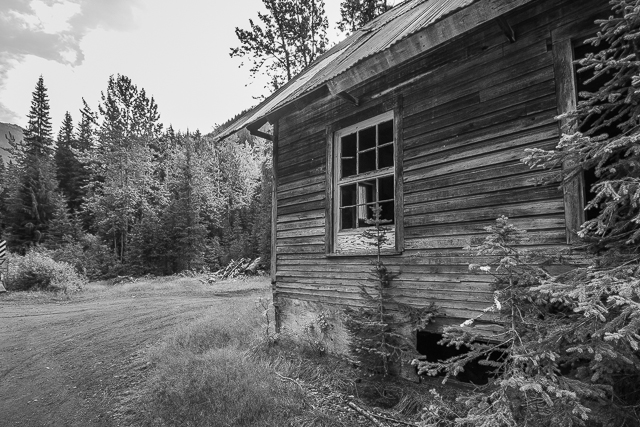
This would make it about 125 years old
That riveted spiral wound pipe would date back to pre-1930-ish. It’s the first we’ve seen like this. There and old mine rails are scattered about the property.
We understand there was another building or two still standing in Cody up until recently. Time and the elements did them in I suppose. We saw piles of timber marking some of these spots I suppose.
And before you know it many hours have passed. When you’re out exploring and enamoured with the subject at hand, time has a way of rushing by. The road calls and it’s back to Sandon. The drive to Cody is best done in something other than a Chevy Cruze. Our ride identifies as a Jeep though, so we’re okay. We got some funny looks from passing 4x4ers. You crazy city folks.
Cody BC is wide open for you to explore. Please, if you visit, show the place respect…in honour of those miners of old that once worked away in the hills above. Take only photos, learn something and come away with fantastic memories. Next time we’re here we’d like to take in the Noble Five Mine itself, or what’s left. There’s a crazy zig-zag mine road heading up that way going almost to the top of the mountain where the woerkings can be found. That’s ATV country…or we can hike. No big deal there.
This post marks a milestone. With it being published the number of words at BIGDoer.com now tops one million. One freaking MILLION! God, we’re long winded! Congrats to us, though! Hurrah! Champagne is in the cards. Now on to two million.
They’re saying…
Your photos are amazing! I live vicariously through you! Patricia Thorsen Lawrence.
That same weekend…
Old Metal Sandon BC – a varied collection.
Hike to Payne Bluff – along the old K&S.
A Tour of Sandon BC – the full meal deal.
If you wish more information on what you’ve seen here, by all means contact us!
Date: September, 2018.
Location: Cody, BC.
Article references and thanks: Hal Wright of Sandon, BC Ministry of Mines, OldMachinePress.com, Book – West Kootenay: The Pioneer Years by Garnet Basque.
If you visit Cody BC, please show the old ghost town your full respect
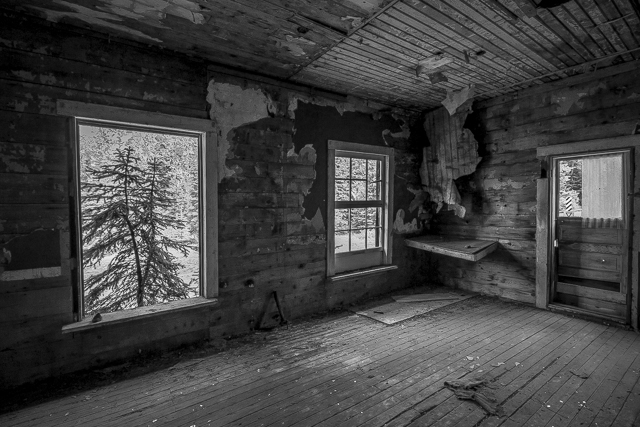
We think the building was later someone’s home.
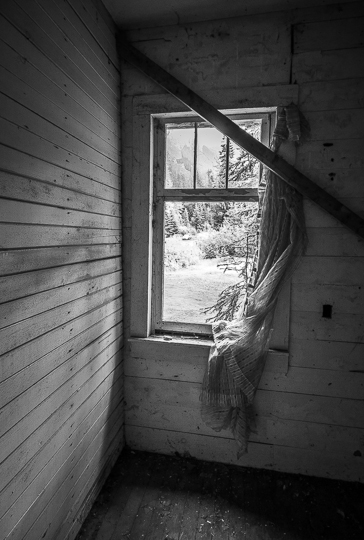
Old photos show it relativity intact into the 1990s.
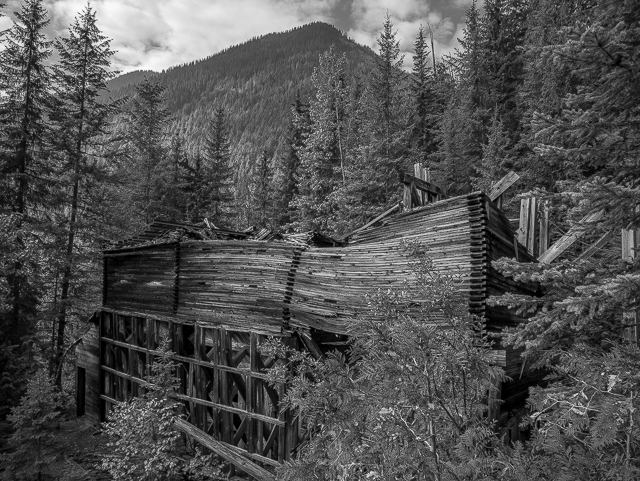
Ore bins at the Noble Five Mill.
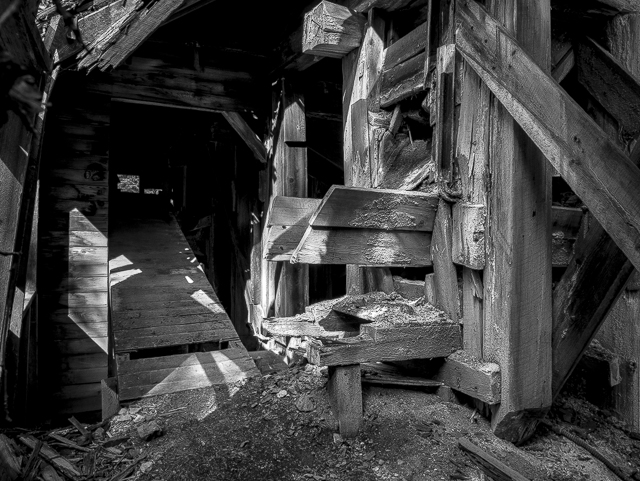
Ore chutes deep in the bowels of the building.
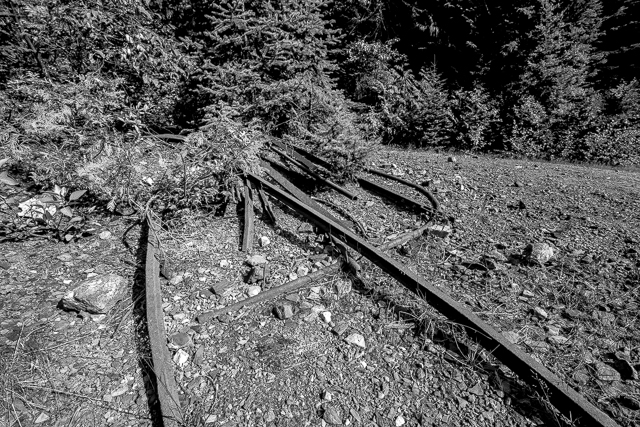
Old mine rails scattered about.
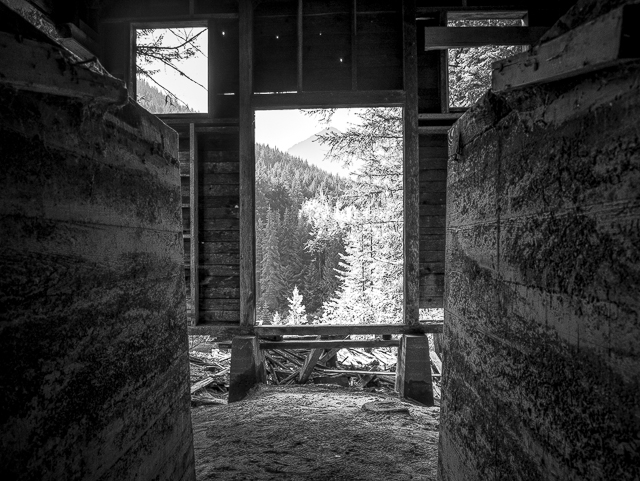
Between concrete pads that supported machinery.
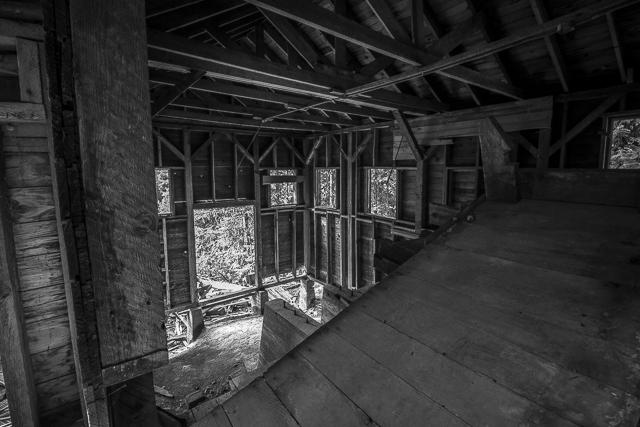
It’s here where ore was sorted, crushed & concentrated.
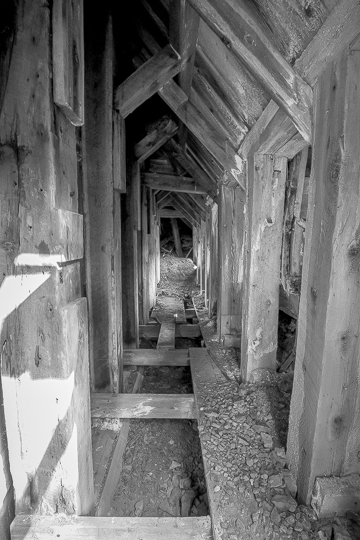
Heavy timbers to carry the load.
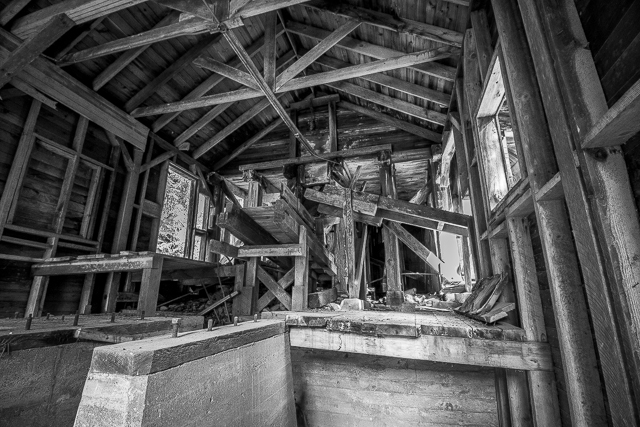
The Noble Five buildings seen date from the 1920s-1940s period.
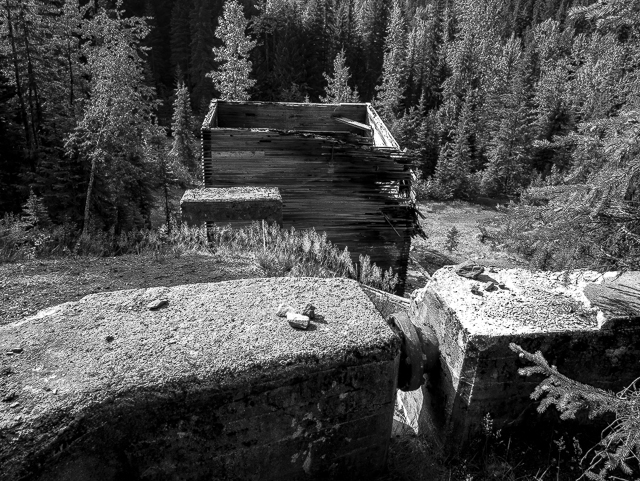
Ore came from the mine above town.
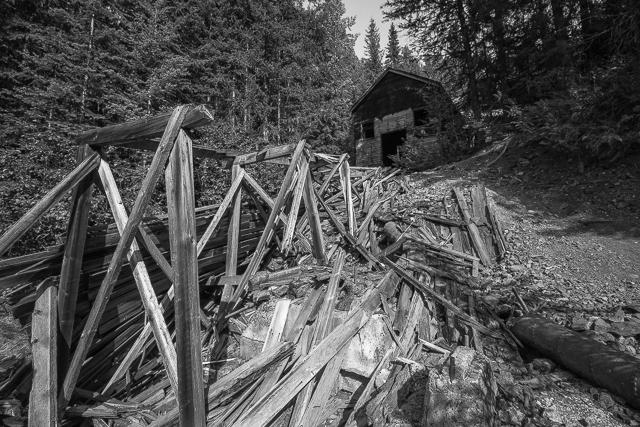
The Noble Five was one of the best producers in the Cody area.
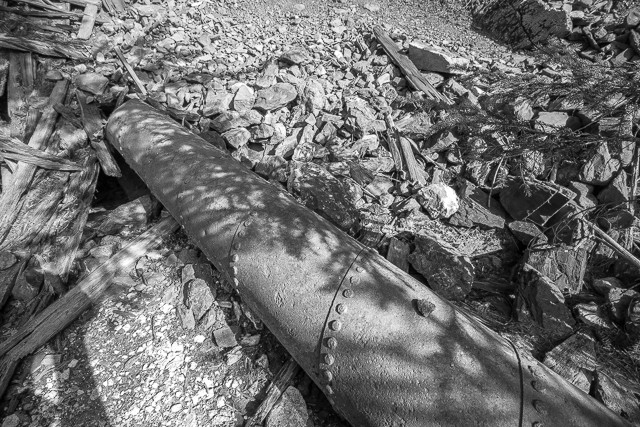
A riveted spiral wound pipe – how they did it back then.
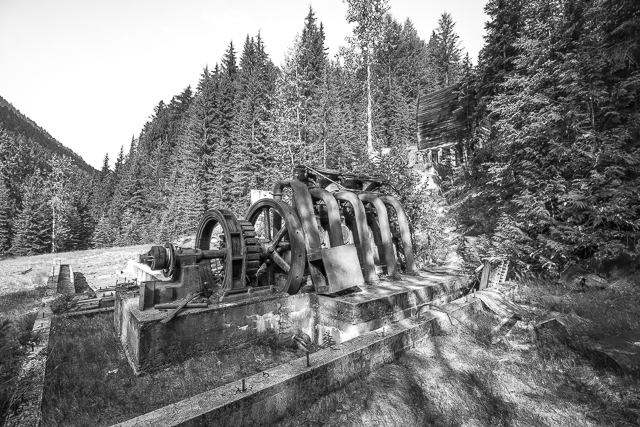
A Model 32 to power the operation.
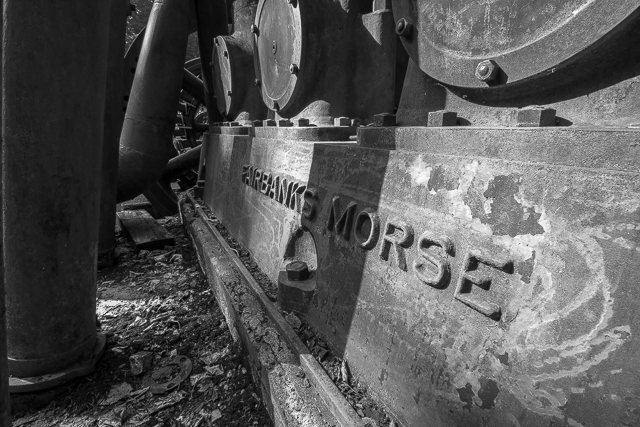
From maker Fairbanks Morse.
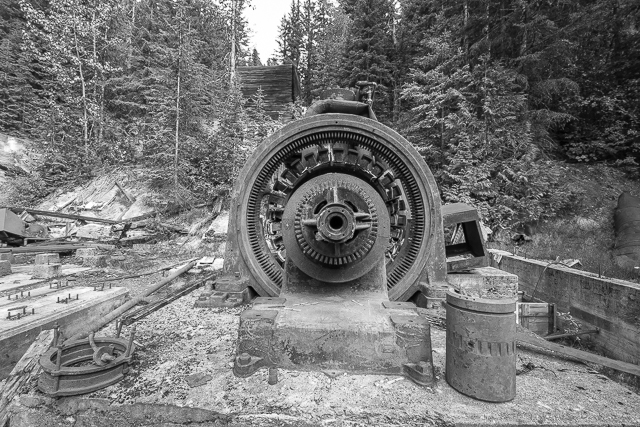
The generator end of things.
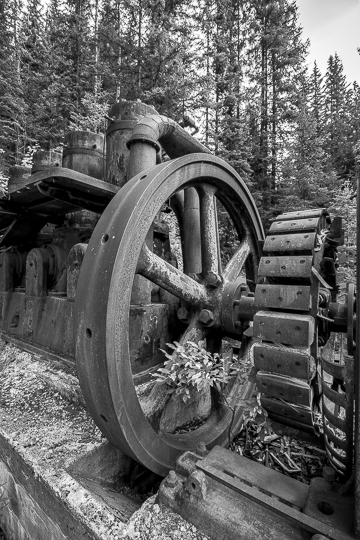
A huge flywheel.
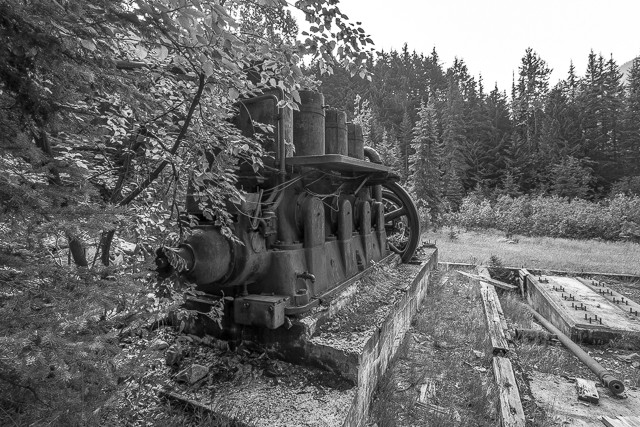
This model was introduced in the 1920s.
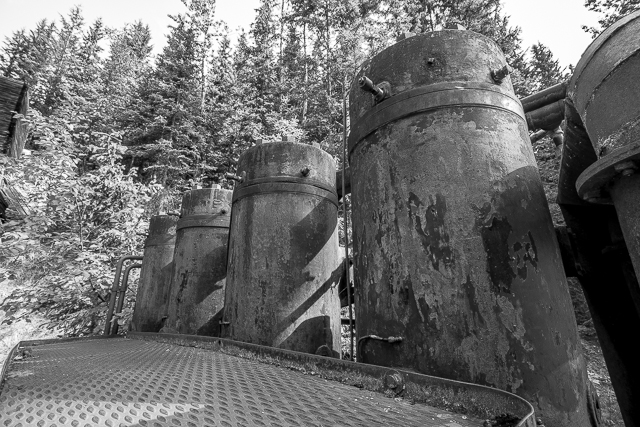
Four HUGE cylinders.
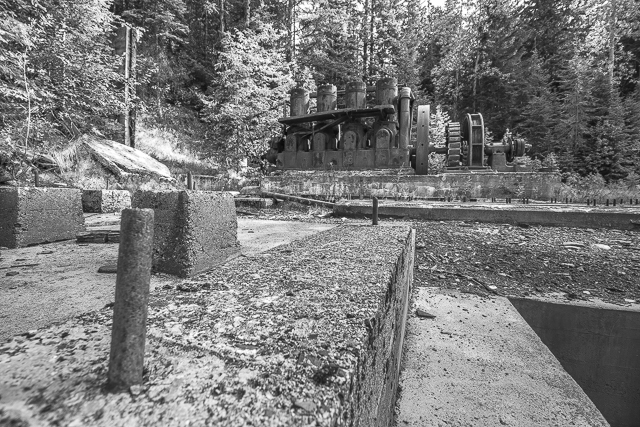
The building it was housed in is long gone.
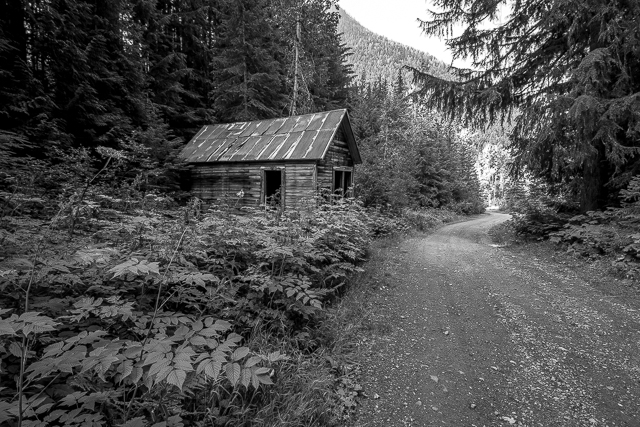
It’s said this was the Noble Five Offices.
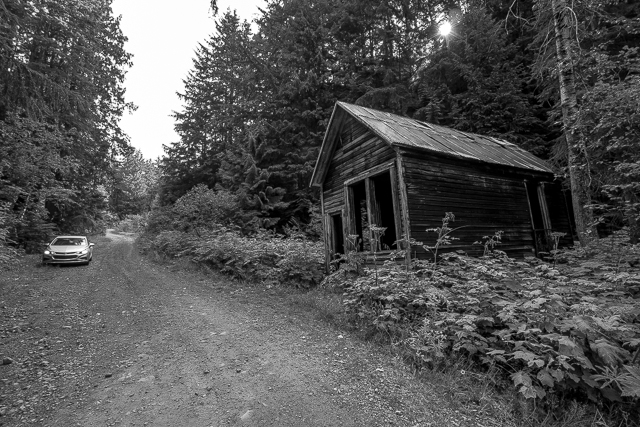
The mighty BIGDoer-mobile identifies as a Jeep.
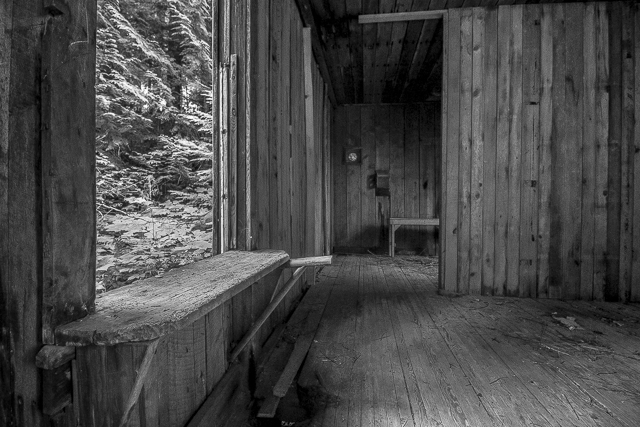
A peek inside.
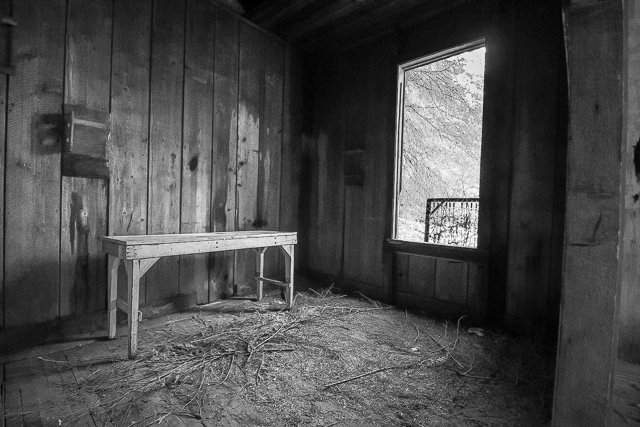
Thinking back to times past.
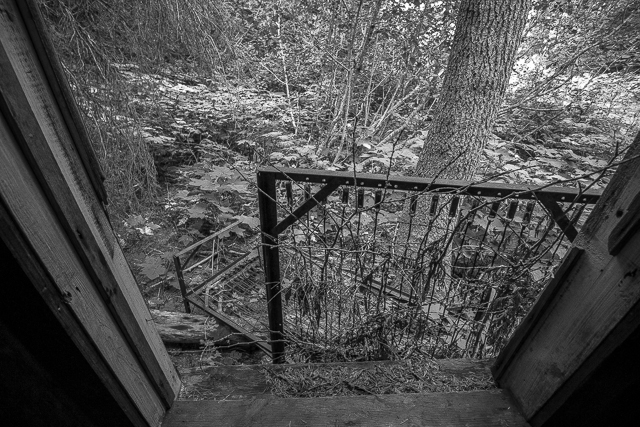
We always seem to find bed remains.
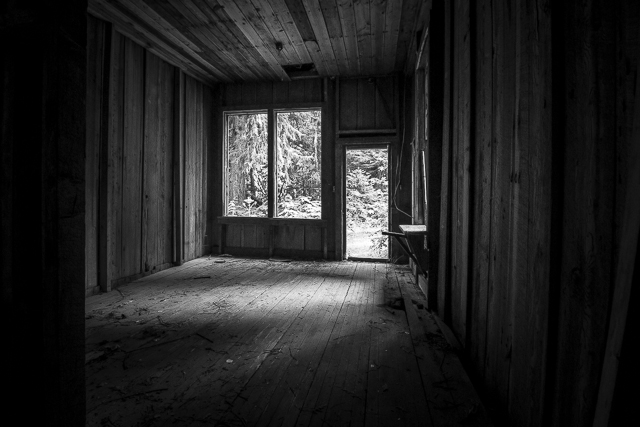
And soon we’re out that door…

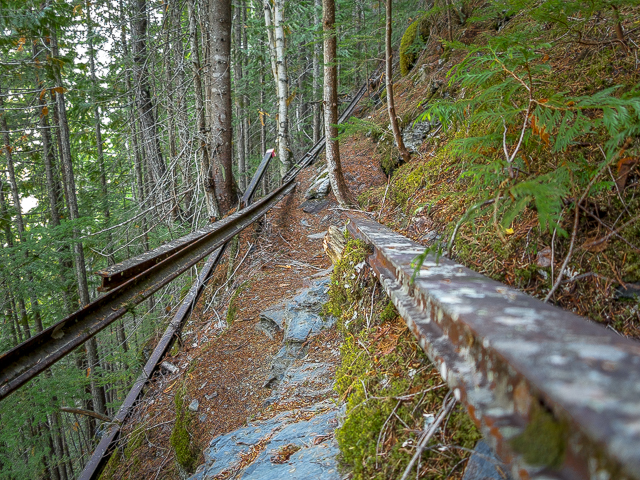
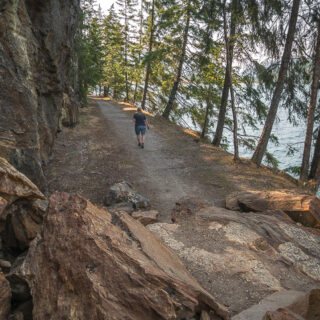
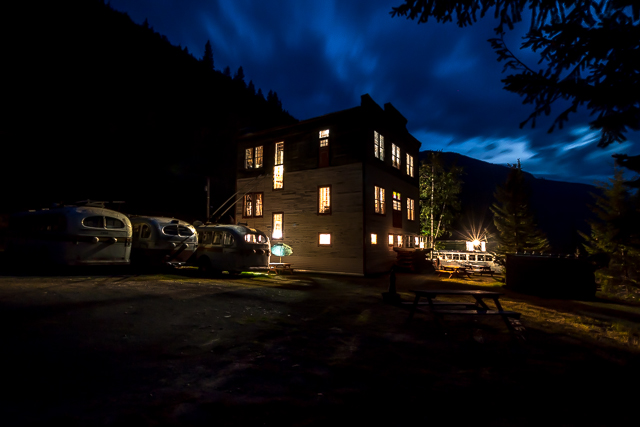
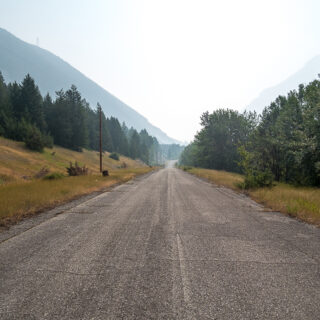
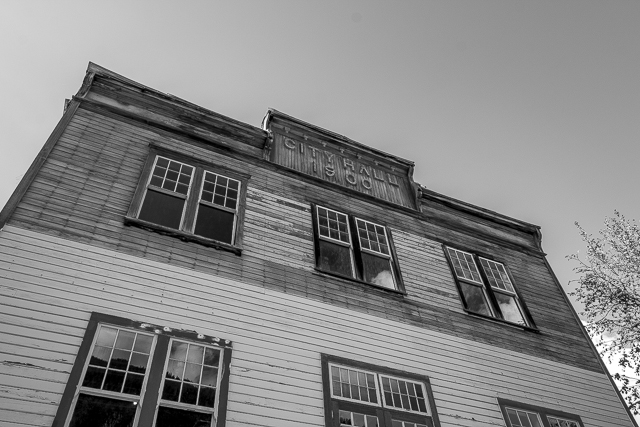
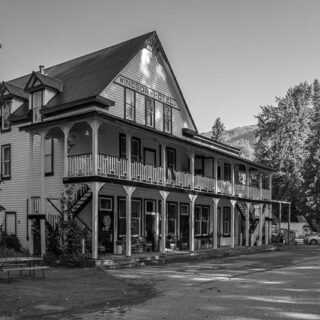
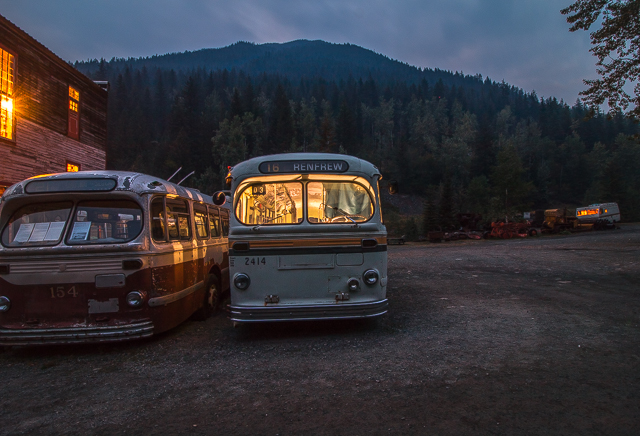
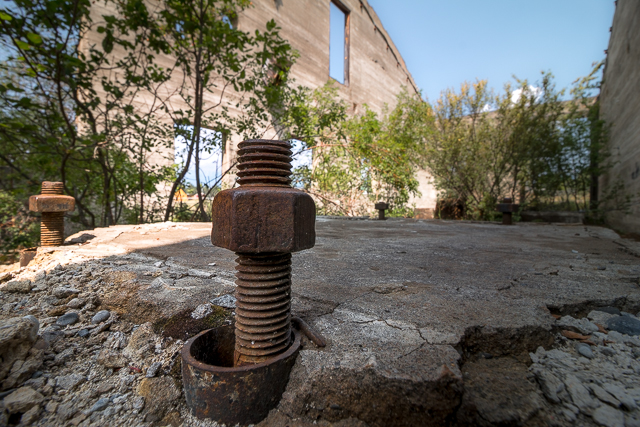
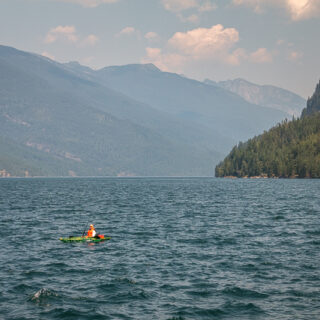
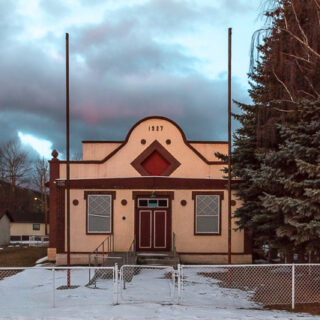
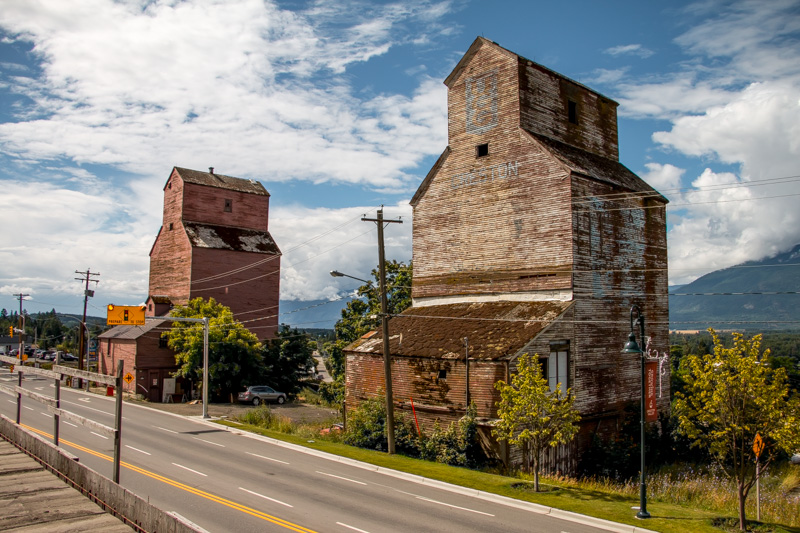
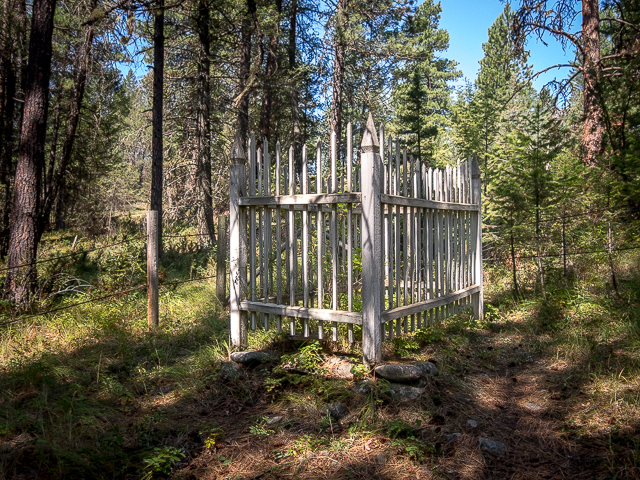
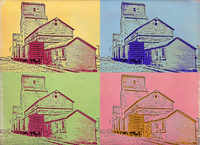






Great write-up! Camped there this summer and it was incredible, but I noticed a couple of brand new cabins to rent up there… but can’t for the life of me remember the names now… would love to enquire about renting for a weekend soon. Can anyone help me out with that?
You’re very welcome. What a special place, Cody. Maybe chat with the fine folks in Sandon. If anyone was to know it’d be them.
Thanks for the post!
Our pleasure.
I visited Cody this summer. I didn’t explore very much. Our host/driver had to return to New Denver.
Time for a revisit? There’s lots of hidden stuff up in the hills.
Yep. A revisit is definitely in order. Your work always makes me want to go to…
And now we’re longing to go back. There’s some cool stuff in New Denver too (and the whole area).
Looking at the pics has us longing to make a return.
Surprised you drove your car up here. Then again, I was surprised I drove my own car up here.
Great photos!
Grew up driving old junker cars (not trucks) on BC logging roads, so it comes easy. Still, it had to be taken slow. Got some funny looks from people camping around the town..”you came in that?” Kudos to you for doing the same. It takes courage. Glad you like the pics!
Great photos. I may need to revisit this place to get better photos.
Thank you, we sure enjoyed our visit to Cody. Minutes after leaving the place we were itching to return. I get that thing about wanting to go back.
Luv these pictures….😊
That’s pleases us to hear that.
I bet that thing would still run with minimal work too
I have a hunch you’re right. It’s a pretty simple engine.
Amazing feat to have transported & set that up there way back then.
I know. The only way to bring it up would be in pieces, perhaps by pack train from the railway connection in Sandon.
Been to Sandon, I believe Cody is a bit farther up the valley.
Will check it out next trip, thank you
Yes, south up the same valley. You’ll enjoy your visit – be sure and take only photos and leave only footprints.
I have been to Cody a few times I did not think there were any buildings there anymore
They’re there if you look. Wander about and take them in, and think back to those heady days of mining and the riches made.
Freakin sweet
You said it!
I had to start one of these at my job everyday. Morse Fairbanks Type Z a smaller version.
A Z’s quite a bit smaller. Still, they come from the same maker.
Great pics Chris
Thank you Johnnie, it means a lot coming from you.
Makes one wonder how they got there.
In many little pieces and it was probably brought up by pack train.
Incredible!!!
Short, sweet and we’re happy. All comments, even brief ones, are welcome.
Interesting piece of industrial history. Mining is a hard job.
Amen, it’s not a job for the weak or timid.
Been to old building a number of times- I had no idea it was the old K&S train station- Thanks for sharing that info.
A bit of back story is what we do. Without, it’s only photos and so many questions.
Time for some more exploring next year. Hell, I’ve been to Sandon the past 4 summers and have yet to even make it just down the road to Cody.
It’s worth a side trip.
Very neat!
I know!
Fantastic photos!
Thanks, it was fun visiting Cody with you.
Amazing piece of machinery. I am in awe.
It’s an amazing hunk of metal.
great photso and neat story, Thanks for posting such interesting photos!
From the bottom of our hearts, a big thank you. We so love sharing these adventures. Please comment more when you can.
Lol camped across from this.
Nice setting to call home for a few days. We saw many campers back in the bush.
I’ve visited sandon many times buy never made it as far as cody – thanks for the look inside!
It’s worth the trip if you can. And you are welcome.
would this have been Diesel, gas, kerosene, ?????????????
Diesel.
Great write-up guys… enjoyed reading!
Our pleasure!
sheltered as best as it could have been – or maybe the trees grew over time – looks like it might have been cozy
The trees grow thick out this way and really crowding in on the building.
Cody, actually. 🙂 This engine doesn’t date back to the glory days of Sandon/Cody but rather was a later mine I believe from 1950 or so.
The building in which it sat dates from the late 1920s, by far the highest period of activity at the Noble Five. Little mining was done in the 1950s in comparison.
So interesting!!
Love abandoned buildings ❤️😊
Our obsession too, as if that wasn’t plainly obvious. Glad you liked the piece.
Great write up, thank you for sharing!
You are most welcome.
I had no idea that’s what that building was for!
Sharing knowledge is what we do.
Would love to fire that up! Those engines never die.
Given how simple they are, I bet with a little work it could be made to run.
Looks like a 32.
Indeed it is.
That is definitely the old Cody K & S Rwy Station. It was a private residence for many years after the the short lived Cody Spur was abandoned. It is still standing there today!
It’s a fine building but I worry it’ll succumb to the elements now that it’s open to the elements and the windows smashed out.
Awesome!! I was told that there were no longer any buildings left in Cody. Thanks for posting!
Just a few, but they’re there. Thanks for commenting.
looks compression ignition (diesel), probably a post WW2 shipping engine.
A little earlier, so the late 1920s for this one. The model 32 was not used in ships that we know and instead was used for power generation and such.
One million words, wow!! Congratulations!
Long winded us! Thanks, and now it’s a million plus, cause we can’t seem to stop.
Love the sound they make.
There’s some videos on Youtube showing some running. The noise is incredible!
If only these walls could talk
It’d be an amazing story if they could. All that history.
Fascinating as always – I don’t think my Civic identifies as a 4×4! 😉
Grew up driving BC logging and mining roads, so we can get a lot of places in a car. Might be slow going, but we can do it. Still, wish we had a proper bush vehicle.
That’s a cool discovery and great photos. Congratulation on over a million words. I didn’t even know that you were counting.
Thank you! We actually weren’t keeping track. Just got a random notice from some backend software.